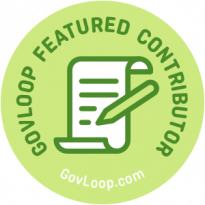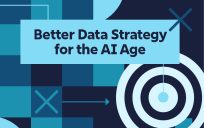This article explores how artificial intelligence (AI) is revolutionizing government compliance by enabling real-time monitoring, automating audits, and enhancing regulatory accuracy. It delves into the transformative potential of AI-driven tools to reduce manual workloads, identify anomalies, and streamline oversight, while also addressing the ethical and governance challenges that arise. As government agencies face growing complexity and shrinking resources, AI offers a strategic path forward — if implemented with transparency, accountability, and care.

Across federal, state, and local agencies, the regulatory landscape is becoming increasingly complex. As expectations for transparency, accountability, and real-time oversight grow, agencies are facing mounting challenges in maintaining compliance with fewer resources. Enter AI — a transformative force not only in customer service or analytics, but increasingly in how government agencies approach compliance and regulatory oversight.
AI for Compliance Monitoring
One of the most powerful uses of AI in the regulatory space is continuous compliance monitoring. Rather than relying solely on manual audits or quarterly reporting cycles, AI systems can ingest real-time data and flag potential noncompliance as it occurs. For instance, a financial regulatory agency might deploy machine learning models to detect anomalous transaction patterns, helping surface fraud indicators long before a human team could spot them.
This shift from retroactive audits to proactive surveillance allows agencies to address issues swiftly, reducing risks and protecting public trust. Tools such as natural language processing (NLP) are also being used to scan large volumes of policy documents, contracts, and communications to ensure language is in alignment with updated mandates.
Automating Routine Audits
Routine audits — often labor-intensive and repetitive — are now prime candidates for AI automation. Robotic process automation (RPA) and AI-enabled analytics platforms are streamlining the process of gathering, validating, and analyzing documentation across multiple systems. One federal agency reduced its audit cycle time by over 60% using AI bots that cross-referenced tax filings, procurement records, and internal performance metrics, significantly improving data accuracy while freeing compliance officers to focus on higher-value tasks.
AI’s impact isn’t limited to efficiency. It’s enhancing audit accuracy and scope. AI systems can review far more data points than human auditors ever could, catching patterns and outliers previously invisible to traditional review processes.
Building Ethical Guardrails
Yet with this new power comes new responsibility. The integration of AI in compliance raises critical governance questions: How do we ensure transparency in algorithmic decisions? Who’s accountable when an AI system flags (or misses) a violation? And how do we protect against unintended bias in data-driven regulatory enforcement?
Government leaders must prioritize AI governance as part of any regulatory tech strategy. This includes mandating algorithmic transparency, requiring human oversight for high-stakes decisions, and building diverse datasets that avoid reinforcing systemic inequities.
AI and the Future of Oversight
AI doesn’t just change how compliance is performed — it reshapes how regulations are designed. With real-time data and predictive modeling, agencies can begin adopting adaptive regulatory models that adjust based on risk signals, similar to how traffic systems optimize flow. These emerging frameworks — called “regulatory sandboxes” or “dynamic compliance models” — could allow for more flexible, innovative governance while maintaining necessary safeguards.
Redefining Governance
The UAE’s groundbreaking launch of the world’s first AI-powered Regulatory Intelligence Office signals a bold leap forward in governance and compliance. By embedding artificial intelligence into real-time regulatory monitoring, predictive analytics, and automated impact assessments, the UAE is reshaping how policy is interpreted, enforced, and communicated. This initiative empowers both public institutions and private enterprises to shift from reactive compliance models to proactive, intelligence-led strategies. It also highlights the country’s commitment to its AI Strategy 2031, positioning the UAE as a global leader in RegTech and offering a blueprint for digital governance that other nations can follow.
Conclusion
As we enter this new era, one thing is clear: AI will be central to any modern, scalable approach to regulation. The challenge — and the opportunity — for government agencies is to move swiftly from exploration to implementation, embracing these transformative tools while fiercely protecting public accountability, ethical integrity, and societal trust.
Now is the time to act. Agencies must not wait for a crisis to modernize their compliance systems. Start building cross-functional teams, pilot AI-enabled regulatory tools, and partner with innovators who understand both governance and technology. The future of effective regulation depends on your willingness to lead boldly, experiment responsibly, and shape a resilient, tech-forward public sector.
Dr. Rhonda Farrell is a transformation advisor with decades of experience driving impactful change and strategic growth for DoD, IC, Joint, and commercial agencies and organizations. She has a robust background in digital transformation, organizational development, and process improvement, offering a unique perspective that combines technical expertise with a deep understanding of business dynamics. As a strategy and innovation leader, she aligns with CIO, CTO, CDO, CISO, and Chief of Staff initiatives to identify strategic gaps, realign missions, and re-engineer organizations. Based in Baltimore and a proud US Marine Corps veteran, she brings a disciplined, resilient, and mission-focused approach to her work, enabling organizations to pivot and innovate successfully.





Leave a Reply
You must be logged in to post a comment.